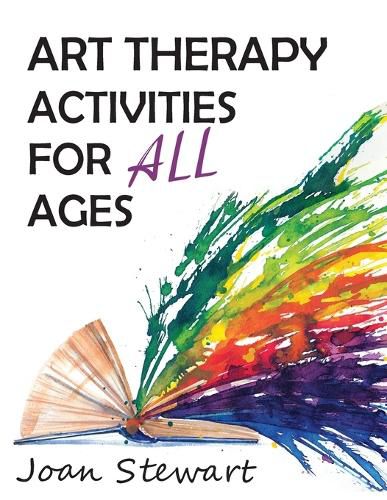Readings Newsletter
Become a Readings Member to make your shopping experience even easier.
Sign in or sign up for free!
You’re not far away from qualifying for FREE standard shipping within Australia
You’ve qualified for FREE standard shipping within Australia
The cart is loading…






This title is printed to order. This book may have been self-published. If so, we cannot guarantee the quality of the content. In the main most books will have gone through the editing process however some may not. We therefore suggest that you be aware of this before ordering this book. If in doubt check either the author or publisher’s details as we are unable to accept any returns unless they are faulty. Please contact us if you have any questions.
The purpose of Art Therapy is to create an oasis of time to allow the brain and body to relax, recharge, and rejuvenate itself, while exploring the creative process of manipulating design elements such as line, shape, form, space, texture, tone, and color.
Art Therapy can help people express themselves more freely, improve their mental health, and improve interpersonal relationships. The basis of Art Therapy is established on the idea that people can recover and feel better via artistic expression.
There is increasing evidence in rehabilitation medicine and the field of neuroscience that art enhances brain function by impacting brain wave patterns, emotions and the nervous system. Art can also raise serotonin levels. These benefits don't just come from making art, they also occur by experiencing art.
As an Art Facilitator, I have thoroughly tested all the activities in this book over many years and with a variety of people. Many activities are structured to encourage team work, problem solving and communication as well as individual creativity in a relaxed, social environment. I was always surprised and impressed at the results.
While each activity focuses on one of the main categories (brain, senses, memory, teamwork and loss) all of them involve a number of skills. The results can be different with each new group and even when presented to the same group again.
$9.00 standard shipping within Australia
FREE standard shipping within Australia for orders over $100.00
Express & International shipping calculated at checkout
This title is printed to order. This book may have been self-published. If so, we cannot guarantee the quality of the content. In the main most books will have gone through the editing process however some may not. We therefore suggest that you be aware of this before ordering this book. If in doubt check either the author or publisher’s details as we are unable to accept any returns unless they are faulty. Please contact us if you have any questions.
The purpose of Art Therapy is to create an oasis of time to allow the brain and body to relax, recharge, and rejuvenate itself, while exploring the creative process of manipulating design elements such as line, shape, form, space, texture, tone, and color.
Art Therapy can help people express themselves more freely, improve their mental health, and improve interpersonal relationships. The basis of Art Therapy is established on the idea that people can recover and feel better via artistic expression.
There is increasing evidence in rehabilitation medicine and the field of neuroscience that art enhances brain function by impacting brain wave patterns, emotions and the nervous system. Art can also raise serotonin levels. These benefits don't just come from making art, they also occur by experiencing art.
As an Art Facilitator, I have thoroughly tested all the activities in this book over many years and with a variety of people. Many activities are structured to encourage team work, problem solving and communication as well as individual creativity in a relaxed, social environment. I was always surprised and impressed at the results.
While each activity focuses on one of the main categories (brain, senses, memory, teamwork and loss) all of them involve a number of skills. The results can be different with each new group and even when presented to the same group again.